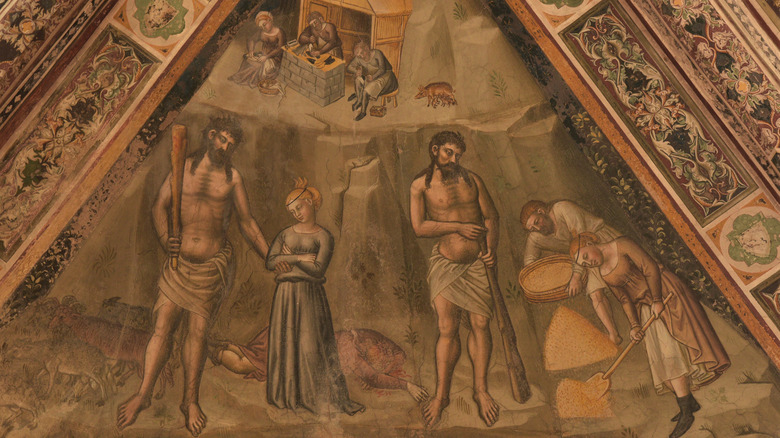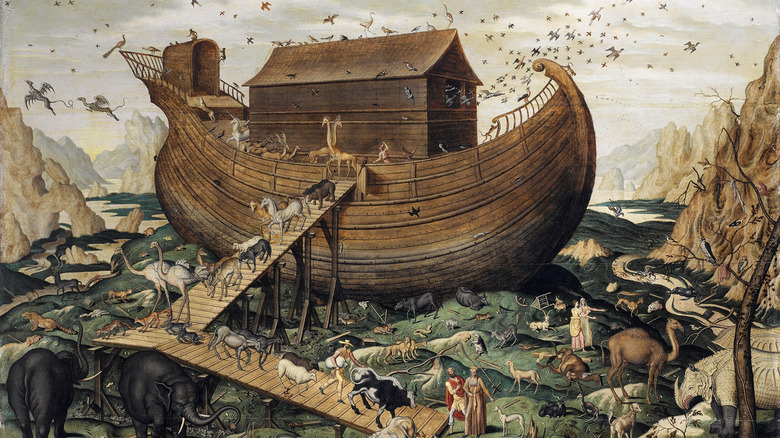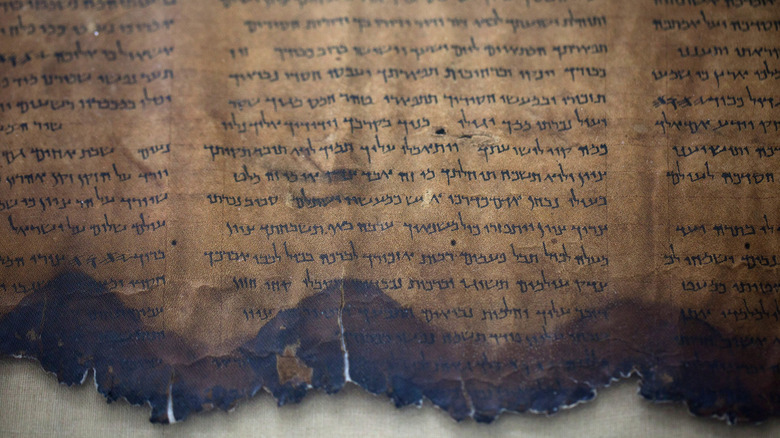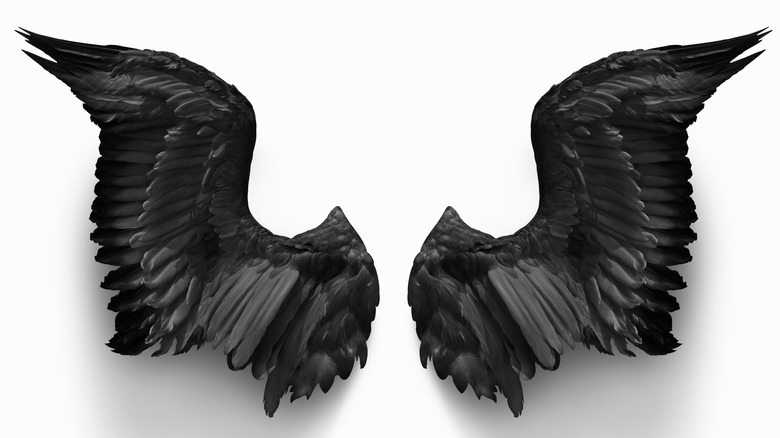The Truth About The Nephilim In The Bible
Murmur the word "Nephilim" around any of an array of ancient astronaut theorists, New Agers and energy healers, past life regressionists who swear they were Atlanteans, armchair Apocrypha philosophers, even neo-paganists and self-made ethnographers such as those on the "consciousness expansion" site Gaia, and you are 100% sure to find common conversational ground. But what are the Nephilim, anyway? Angels? Demons? Giants? Extraterrestrials? The sheer volume of extrapolations and interpolations is almost as head-spinning as the original tales of Nephilim themselves.
The source of such tales is, in part, the Bible. And we don't mean the extra-biblical stuff (but eventually, via the Book of Enoch, we will). We mean canon. Genesis 6:4 says (per Bible Gateway, NIV version): "The Nephilim were on the earth in those days — and also afterward — when the sons of God went to the daughters of humans and had children by them. They were the heroes of old, men of renown." Or as the Christian Broadcasting Network (CBN) bluntly asks: "Did Fallen Angels Have Sex with Humans and Create a Race of Giants?" (Yes, this is where we're headed. Deep breath.)
So are these angel-sired "heroes of old" demigods like Gilgamesh or Herakles? Symbolic "giants" in terms of their historical influence? What does the Bible actually say about the Nephilim?
Giants descended from fallen angels killed in the great flood
For the purpose of this article, and to have an ecumenical discussion, we're going to sidestep any literal interpretations of the Nephilim story and focus on what ancient texts like the Bible actually say about a narrative that has gotten garbled by popular culture via the aforementioned speculation, theorists, and so forth.
The Nephilim thread starts with the Bible's Book of Genesis, and takes place before the flood, when Noah builds his boat and floats away to safety. The "sons of God" interbred with human women and their offspring were called the "Nephilim," per Genesis 6:4 on Bible Gateway. They were part of the overall "wickedness" that led God to hit the reset button on creation.
Later on, in Numbers 13:33, we encounter the Nephilim for the second (and last) time when some Israelites were scouting for Moses and Aaron during their exodus from Egypt. As Bible Gateway again cites, the scouts came back saying that part of Canaan was inhabited by giant people who "are stronger than we are." They were so big, in fact, that the scouts were as big as "grasshoppers" to them. These folks were the descendants of Anak, who himself descended from the Nephilim. Anak, as Got Questions Ministries helpfully outlines, was the son of Arba, chief warrior of a tribe of people in Hebron, and the "greatest man among the Anakim." This last line echoes the aforementioned "heroes of old, men of renown" line from Genesis.
The Book of Enoch in the Pseudepigrapha tells more
To summarize: there's an account in Genesis about angel-human hybrids (Nephilim) that was mentioned again in Numbers when the Israelites came across some big, scary dudes in an area they wanted to colonize. They were so big and scary, in fact, that they were likened to the old Nephilim stories. In the end, that's all the Bible has to say.
To learn more, we've got to turn to non-canonical works like the Pseudepigrapha, a set of texts written anywhere from around 600 BCE to 900 CE by a variety of Christian and Jewish authors, as World History says. These writings are different from the Apocrypha — the books of Tobit, Judith, Maccabees, and so on, accepted by Catholics, not Protestants, as core Biblical literature. The Pseudepigrapha is where traditional Biblical tales turn even more fantastical, full of monsters, magic, and metaphysics — like Solomon's magic ring – that definitely illustrate why they were omitted from the Bible when it was compiled in the 5th century, and haven't been added since.
The Book of Enoch, one such book, was first found in Ethiopia and brought back to Europe in 1773. It was written in Greek as translated from Aramaic, and likely brought to Ethiopia by the 4th or 5th centuries CE when the region was converted to Christianity, as Text Manuscripts says. Around 80 manuscripts exist, total, including fragments found in the Dead Sea Scrolls. Enoch is where the Nephilim take center stage.
An angelic rebellion, demi-god offspring, cannibalism, and more
The Bible's pared-down version of the Nephilim tale gets a major expansion in the Book of Enoch, which is what inspired the aforementioned ancient aliens theories and the like.
Enoch contains a smaller, nested tale in the "Book of the Watchers," available in full on sites such as Augsburg Fortress. It includes (brace yourself): a rebellion against God of 200 angelic "watchers" (led by "chiefs" with names such as Kokabel, Armumahe, and Samshiel) because the sexiness of human women made them uncontrollable amorous; the rampant rape of human women that spawned twisted giant offspring called the Nephilim; the literal cannibalization of humans by the Nephilim; the watchers teaching humans about metallurgy, agriculture, and "sorcery for the loosing of spells and magic"; a "righteous scribe" named Enoch sent by God to parlay with the watchers, who in turn ask Enoch to intercede with God on their behalf; and on and on it goes, until the story reconnects with the flood account.
As Jewish Virtual Library explains, Genesis 6:4 uses the word "gibborim" to describe the Nephilim in its "heroes of old" line, a word that in ancient context meant demi-god: half-divine, half-mortal. Such entities are common in myth, and represent the best and worst characteristics of humanity (for instance, Gilgamesh: tyranny; Herakles: valor) in exaggerated form. At the very least, it makes sense why a cautionary apocalyptic tale like the flood account would point to the worse angels of our nature.



